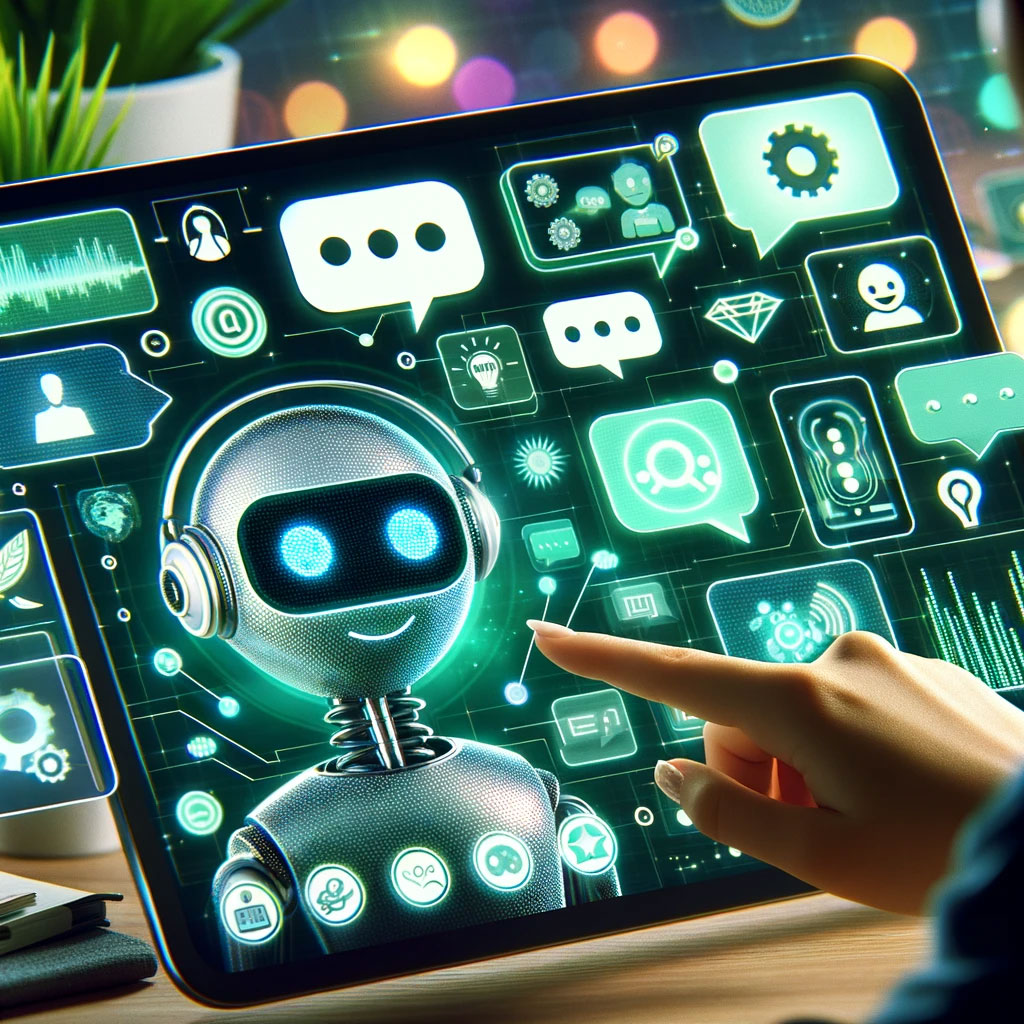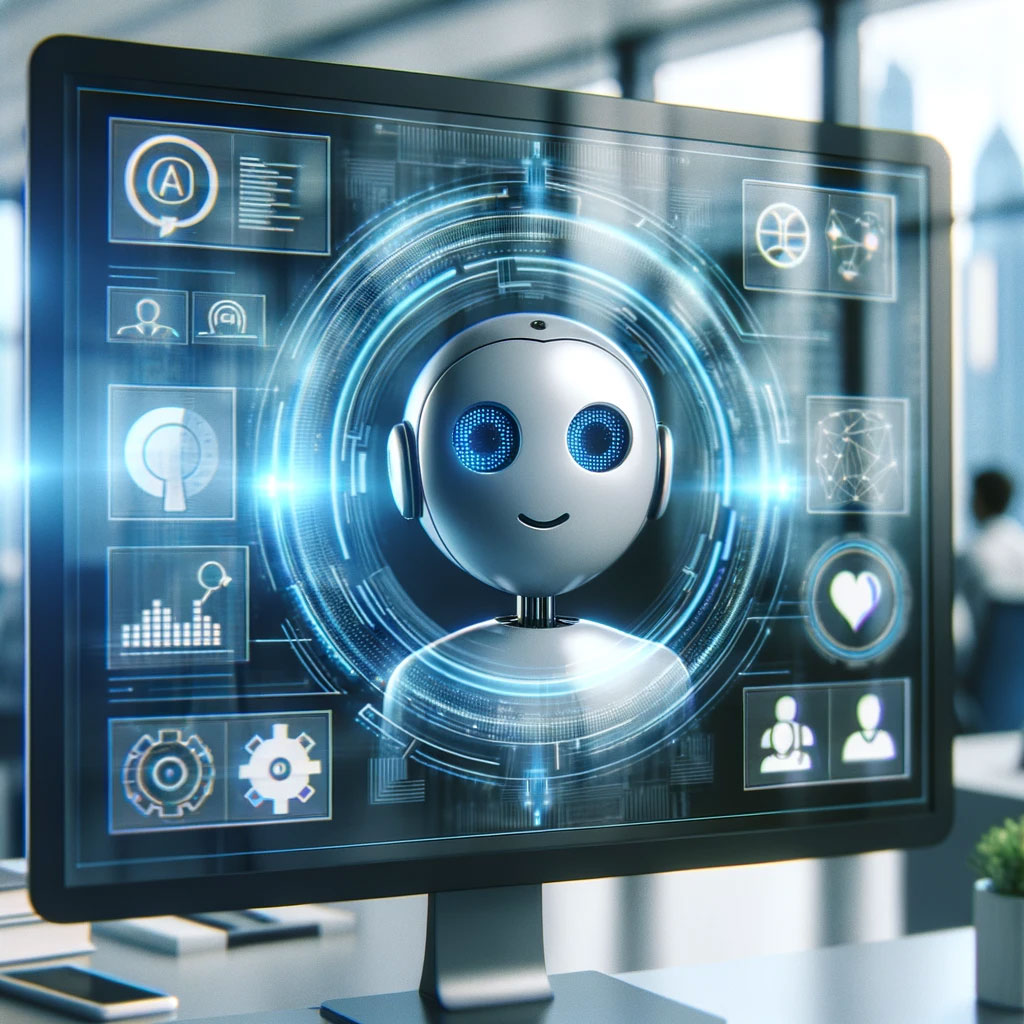Chapter 2
Introduction
In the dynamic world of business technology, AI chatbots stand at the forefront of a revolution. No longer confined to customer service, these digital wizards are now pivotal in reshaping how businesses operate internally. As we journey deeper into the realm of AI chatbots, this chapter unfolds the transformative impact they have within the cogs of a business’s internal workings. Imagine a workspace where mundane tasks are handled by intelligent bots, collaboration is a breeze, and efficiency is not just a goal but a standard. This is the world AI chatbots are creating – a world where streamlined operations and enhanced collaboration are the norm.
The Role of AI Chatbots in Internal Business Operations
AI chatbots, more known for their customer facing services have a have broader use case, and potentially more impactful role within business operations. They can become the unseen heroes in the workplace, silently and efficiently handling a myriad of tasks that collectively drive business efficiency.
- Automated Task Management: Picture a day where scheduling meetings or managing workflows no longer falls on the shoulders of your team. AI chatbots seamlessly take over these routine tasks, freeing your employees to focus on the bigger picture. They’re like the efficient assistants who never tire, always ensuring that your business’s daily operations run smoothly.
- Efficient Information Retrieval: In the vast ocean of data that a business accumulates, finding specific information can be akin to searching for a needle in a haystack. Enter AI chatbots. They dive into this sea of data and emerge with the pearls of information you need, be it the latest project updates or crucial company policies. This rapid retrieval system saves precious time and boosts productivity.
- Streamlining Internal Communications: Communication in a bustling business environment can often become a miscommunication mess. AI chatbots step in to clear the fog, ensuring that messages travel swiftly and accurately between departments and team members. They act as the connectors in your business’s communication network, ensuring that every link in the chain stays strong and informed.
In essence, AI chatbots are redefining efficiency in the workplace. They’re not just tools; they’re partners in driving your business towards a future where streamlined operations and effective communication are the cornerstones of efficiency and human resource allocation. These are just some examples of the use cases but there is a whole list of potential tasks they can perform, seamlessly integrating with existing business models.
Implementing Chatbots for Internal Efficiency
Imagine seamlessly weaving AI chatbots into the very fabric of your business operations. The key to unlocking their potential lies in a harmonious integration with your existing internal systems. Whether it’s blending them into your HR platforms, project management tools or intranets this integration is where chatbots begin to truly shine. They become more than tools; they transform into integral components of your business machinery.
Customisation is the next step in this journey. Tailoring chatbots to meet the unique needs and functions of your business isn’t just beneficial, it will soon become the norm and essential. It’s about crafting these digital assistants to speak the language of your business, understand its nuances and cater to its specific demands.
But what about your team, the human element in this digital equation? Training employees to effectively interact with chatbots is crucial. It’s not just about teaching them the how-tos, it’s about helping them embrace these digital colleagues, understanding how they can make their work lives easier and more productive.
Challenges and Considerations
Embarking on the journey of integrating AI chatbots into your business processes is like navigating uncharted waters, rewarding yet filled with challenges. Paramount among these is safeguarding data security and privacy. Implementing chatbots necessitates stringent protocols to protect the sensitive information they access, ensuring your digital ecosystem remains secure and trusted.
Then there’s the human element, managing employee resistance and change. Introducing AI chatbots into your business workflow isn’t just a technological shift; it’s a cultural one. Clear communication about the benefits and roles of chatbots can turn scepticism into acceptance, resistance into collaboration.
A crucial aspect that continuously echoes is the need for improvement and updating. As your business evolves, so should your chatbots. Keeping them updated with the latest functionalities ensures they stay in sync with your business’s changing needs and technological advancements.
AI Technologies Behind Chatbots
AI chatbots are powered by a fusion of advanced technologies, each contributing to their ability to understand, learn and interact. At the heart of these chatbots lies Natural Language Processing (NLP), enabling them to comprehend and respond to human language nuances. Coupled with this is Machine Learning (ML), which allows chatbots to learn from interactions and improve over time, becoming more efficient and accurate in their responses.
The evolution of these technologies has been phenomenal. Early chatbots followed simple, rule-based algorithms but today’s AI chatbots use complex neural networks, mimicking human brain functioning to a certain extent; bolt on a form of memory and you have a potent mix and powerful tool at your disposal. This advancement means that modern chatbots can handle more sophisticated tasks, making them invaluable assets in internal business operations.
Future Trends and Predictions
The future of AI chatbots looks promising, with several emerging trends poised to enhance their capabilities further. We’re looking at advancements in AI that will enable chatbots to handle more complex, context-rich interactions, making them even more versatile in a business setting. Predictive analytics integration is another exciting development, where chatbots could anticipate user needs based on past interactions.
We might also see more personalised chatbot interactions thanks to advancements in AI-driven personalisation algorithms. This personalisation will make chatbots more effective in addressing specific employee needs, thereby boosting internal efficiency.
Furthermore, the integration of voice recognition technology is set to make chatbots more accessible and user-friendly, broadening their application within businesses. As these technologies continue to evolve, AI chatbots are likely to become an even more integral part of the internal business processes, driving efficiency and productivity to new heights.
Conclusion
As we conclude this exploration of leveraging AI chatbots for internal business efficiency, we stand at the cusp of a significant leap in digital transformation. The journey is complex, yet the potential for revolutionising internal operations is clear and compelling. As we move towards the next chapter, “Integrating Chatbots with Existing Digital Platforms,” the focus shifts to blending these intelligent tools into your business’s existing digital fabric seamlessly.
We invite you to reflect on how AI chatbots could redefine efficiency within your business. Share your experiences, engage with your queries, and join us in this ongoing exploration of the dynamic world of AI chatbots. Your insights and experiences are invaluable as we collectively navigate this transformative digital landscape. Stay tuned for more insights in our series, where we unravel the intricacies of AI chatbots and their impact on business efficiency.



